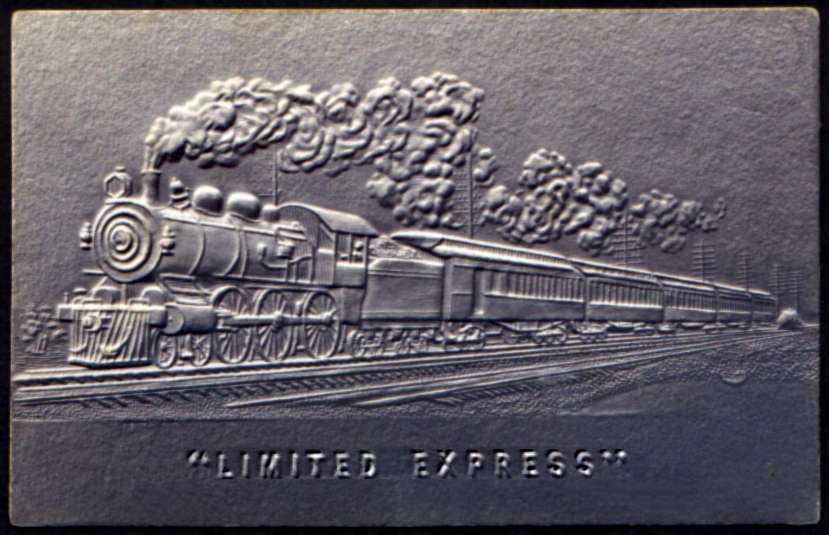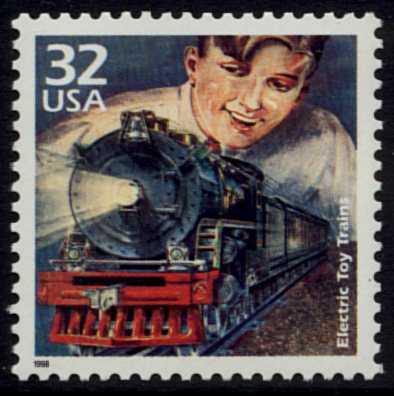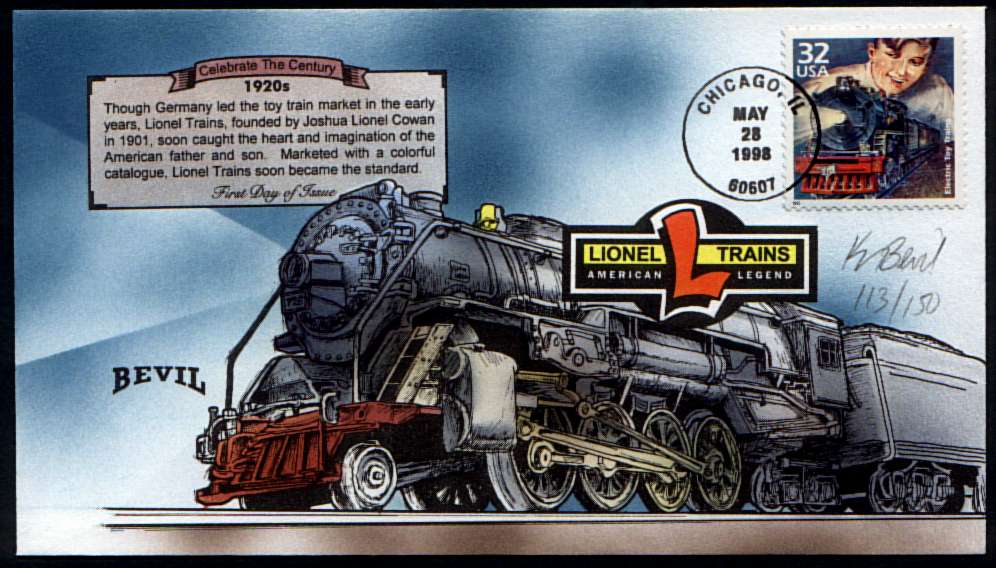|
Toy trains did not begin in the 1920s, though we cannot say for sure when the
first one was made. We do know that the earliest full-sized self-propelled
steam locomotives appeared in the late 1700s and early 1800s, and they were at
first capable of attaining no more than the breathtaking speed of from three to
six miles per hour, while their destinations were limited to the very few places
where track had been laid. The early puffers were first introduced in Germany
and England, and shortly thereafter made their debut in the United States. There
were a few toy manufacturers who reproduced these earliest steam engines, mainly
craftsmen for the upper class.
So there have probably been toy trains almost as long as there have been trains.
As the westward expansion of the U.S. was aided by the development of the
railroads, the larger toy manufacturers added train pieces to their inventories,
though initially only on a limited scale. The romance of the railroads became an
important factor to these companies - the average person stood in awe of the
smoke-belching oddities. The Merriam Manufacturing Co. of Durham, CT was one of
the first to manufacture painted toy trains around the 1830s.
The early pieces rolled on flat, flangeless wheels and were called
'floortrains.' Other companies followed Meriam's lead. Toy producers such as
George Brown of Forrestville, CT produced three wheeled engines, and Althof
Bergmann and Company of New York were involved with the manufacture and
distribution of several American floortrains.
Fabricated from sheets of tinned iron, these toy trains were Painted or
lithographed, and most were quite fragile compared to the later cast iron or
wood pieces. And they were fairly expensive compared to other toys of the times,
so wooded examples were a fairly adequate alternative for those who could not
afford the products of Meriam, Brown, or Beggs. Cast iron toy trains made their
appearance around the 1870s, and were a vast improvement over their tin
counterparts. Ruggedly built, they could withstand the rough play to which they
were subjected by their young engineer owners. These cast iron floor trains were
produced through the 1930s, and it was fairly early in their development when
several manufacturers put motors in their castings and placed them on tracks.
The incorporation of motors into the bodies brought about a whole new era of toy
train locomotion.
George Brown is credited with introducing the clockwork mechanism to American
toy trains in 1856, and other toy makers soon followed, including the excellent
James Fallow and the Blakelee Co., both also of CT. The clockwork mechanism
consisted of a series of gears activated by a coil spring that was wound by
means of a key that was inserted into the body or a smokestack. The length of
the run-time depended on the speed and the size of the gear ratios but some were
capable of running nearly an hour on a single winding. The clockwork mechanism
was not a new device but had earlier been incorporated into toys that dated back
to the 16th century.
Somewhat similar to the keywind clockwork pieces were the friction motor
examples which were popular from the 1890s to the 1920s. As expected, the
running time was quite short as friction on the wheels and up through the gears
reduced the spinning activity of the flywheel. However, they were very practical
in that they required no key - which more often than not, was soon misplaced.
The steam-powered toy locomotive was a natural for the toy manufacturers. Not
only was the running time longer than either the keywind or friction examples,
but the use of steam power more closely approached the real thing. The trains
were placed on tracks and the wheels were flanged to maintain contact with the
rails around curves. To generate steam, water was placed in the locomotive's
boiler and the steam valves were closed. Heat was produced by igniting a wick
saturated with flammable spirits or by use of dry, burnable materials. When the
steam reached its peak, the steam valves were opened and the pistons transferred
power to the driving wheels putting the train in motion. The idea was ideal, but
there were several inherent drawbacks, not the least of which was they produced
a potential for fire damage as well as for minor explosions.
Electric toy trains evolved slowly - In the late 1800s when American electric
toy trains made their debut, very few homes were wired for electricity. Those
that were wired featured overhead light sockets as the terminus for the electric
power. The wall outlet was still years away from practical home use and toy
manufacturers had to produce self-contained electrical sources for the home
railroader. The 'wet-cell' was one of the first such sources and consisted of a
series of glass jars, metal electrodes, and battery acid. These components were
also quite dangerous in the hands of a young engineer. Dry cell batteries were
cleaner and less dangerous but they too, had a limited expectancy. Carlisle and
Finch of Cincinnati marketed their electric trains in sets that included dry
cell batteries in 1890s. Replacements were available but for a significant cost.
Other sources of electric power included a hand cranked dynamo that featured a
large wheel and handle which, when turned, produced electric current. But the
drawback to that was that a young engineer soon tired of cranking. Have we not
all wondered, just before our crank ice cream was ready, if the reward was worth
the effort?
The eventual arrival of widespread home electricity was a boon to the toy train
industry, for it gave a toy train consistent speed, and direction could be
controlled from a distance which simulated reality more closely to the juvenile
engineer. The introduction of the rheostat into the electric circuit brought
about the speed control of the train. By placing this device between the power
source and the locomotive's motor, electric current could be portioned out to
the motor in increments. This device was the basis for the modern day train
transformer and its introduction in the decade of the 20s, as electric power
became more common, led to a hobby that is popular to this day far both the
young and old.
|











